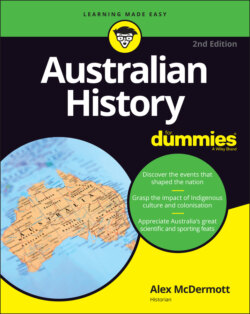Читать книгу Australian History For Dummies - Alex McDermott - Страница 16
THE GREAT AUSTRALIAN LEISURE TIME EXPERIMENT
ОглавлениеIn the period of the long boom that followed the gold rushes in Australia, one of the things that people began pushing for was more leisure time. The eight-hour working day movement was very successful (see Chapter 8), and workers often showed that if they had to choose between more pay (and more working hours) and less pay (and fewer working hours), they would choose the latter.
With this leisure time, many Australians started passionately playing sport and games. In 1858, what became known as Australian Rules, a uniquely colonial code of football, was developed. (In all likelihood, this code drew on an Indigenous game, perhaps Gaelic football and definitely the still-developing British codes of rugby and soccer). In 1861, the Melbourne Cup, the renowned ‘race that stops the nation’, started stopping the nation, with the race results being telegraphed to the rest of the colonies. By 1879, Melbourne Cup Day was a public holiday in Melbourne (as it still is today). From 1865, rugby was being played regularly in Sydney. (See Chapter 10 for more on the use of leisure time during the long boom and the development of different football codes in different colonies.)
Cricket was played everywhere, including by Indigenous Australians — with the first Australian cricket team to tour England being made up of 13 Aboriginal men. The (white) colonials proved so adept at picking up the game that they were able to defeat English teams first in 1877 in Melbourne then in 1880 in London. This provoked shock and consternation among the English, and some wag placed an obituary in the papers for English cricket, which, the obituary mockingly declared, had died at the Oval — its body was to be cremated and the ashes sent to Australia. These mythical ‘ashes’ of English cricket have been at stake in The Ashes series of test cricket matches between England and Australia ever since.
The crowds that came to watch these burgeoning spectator sports — particularly Australian Rules and the Melbourne Cup — showed a distinctively colonial disregard for old world rigid class distinctions. Workers, business owners, bankers and farmers, men and women — all mingled freely and barracked loudly.
